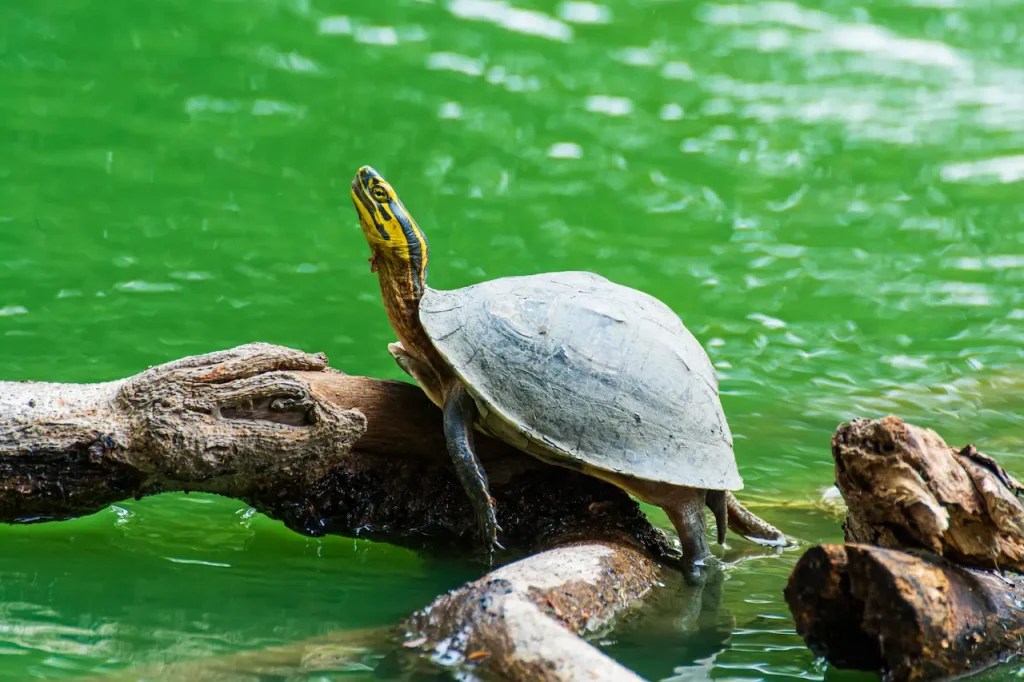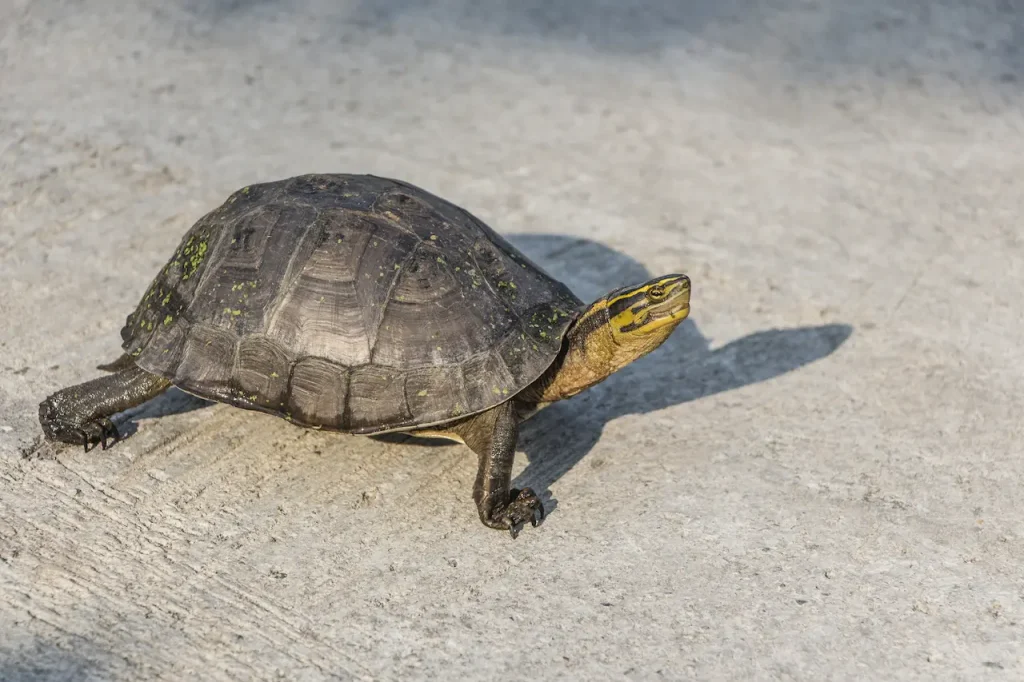Asian Box Turtle
Asian Box Turtle (Gray, 1856) belong to the genus Cuora. Cuora is a genus of turtles with eleven different species and nearly as many subspecies.
ASIAN BOX TURTLE CLASSIFICATION
ASIAN BOX TURTLE SPECIES

Table of Contents
What do Asian Box Turtles Look Like?
As with the North American species of box turtle, the Asian box turtle gets its name from the fact that it can enclose itself entirely within its shell. Their sizes range anywhere from five to over ten inches in length, depending on the species or subspecies in question.
The colour of an Asian box turtle also varies a lot between different species. Some common colours include yellow, brown, grey, dark green, and black. A lot of the species share a trade mark set of lines going down the sides of the faces/necks and meeting at the tip of their nose. The colours of these lines vary, but some common examples include yellow, white, and orange; the stripes are often bright.
Do They Make Good Pets?
There are pros and cons to having an Asian box turtle as a pet.
One thing that makes Asian box turtles harder to care for than most of the box turtles in North America, is that they are semi-aquatic turtles. This gives them some unique needs that must be met when they are being kept in captivity.
Overall, they are not difficult to take care of. You just need to make sure you know what you’re doing, so research their needs carefully. It helps a lot if you’ve owned a box turtle in the past. Box turtles that don’t have any aquatic needs may be a better option for beginners.
Turtles are not the best choice for a pet if you’re looking for affection, but they are a treat to look at. Asian box turtles have a lot of unique looks throughout their various species and make an exotic addition to a home or backyard. Their semi-aquatic needs can also lead to the construction of elaborate indoor tanks or outdoor ponds, for those who have the time and money to construct and upkeep such settings.
Availability depends heavily on which species you want to purchase. Some are fairly common and others have become all but nonexistent in the pet trade.
They are not native to the United States, and having one imported could be costly and require a lot of paperwork. However, Asian box turtles are being bred in captivity in North America. This is the best way to acquire one if you can.
When buying any box turtle, it’s best to find one that was bred in captivity. They have less chance of bringing parasites or diseases into your home, and they also tend to live longer than a turtle that was born in the wild and put into captivity later.
Overall, Asian box turtles can be a challenging pet to take care of; but an exotic and interesting one. The challenges also won’t be too much of a hassle as long as you take the time to study them and have the finances to meet their special enclosure needs.

How do I Take Care of an Asian Box Turtle?
As mentioned earlier, one of the challenges of keeping an Asian box turtle is that they are semi-aquatic. With most North American box turtles, your enclosures will need a body of water just large enough for the turtle to soak in. For Asian box turtles, half of the entire enclosure must be water. They need ample room to soak and swim, as well as plenty of room to walk around on solid ground.
Cleanliness is vital for your turtle’s health, and you must get a filter for their water supply.
A large enclosure often works best. There should be plenty of places for them to hide, such as rocks, brush, hollow logs, and so forth. This will also give the enclosure a more natural feel.
Glass can be less than ideal for some specimens, so consider an enclosure that doesn’t use it, or has the class covered; such as with paper on the exterior. Glass is a confusing concept to a turtle, they don’t understand it. They will sometimes crawl against it endlessly trying to escape, and forever pushing against this invisible barrier can be quite stressful to them and affect their well-being.
Reptiles cannot regulate their body heat; they must obtain warmth from external sources. Your enclosure will need a heating lamp that can reach 90 degrees in the hottest spot. You should have the heat source somewhere away from the centre of the enclosure. This way, your turtle can move closer to or further away from the heat source as needed. They can also use fresh water and shade to cool off.
In addition to your heat lamp, you will also need a bulb that simulates the sun’s rays if you have an indoor enclosure/tank. Turtles need exposure to the sunlight to stay healthy. Being deprived of it for too long can cause serious health problems. In addition to the special bulb (which you can find at most pet stores), it can help to sometimes take your turtle outside, set them into a small enclosure and let them bask in the sun for a bit. Never leave them unattended like this; they can overheat quickly if it’s too hot out and you need to spot it quickly if they don’t look well.
Humidity is also very important. The large, nearby water source will help some. You can improve humidity further by taking a spray bottle and misting the enclosure with fresh water several times a day.
How Long Can They Live?
Some turtles can live for a very long time if taken care of properly, and Asian box turtles are among that list. However, turtles that are kept in captivity tend to have a shorter lifespan than those who live out their entire existence in the wild. For Asian box turtles kept in captivity, healthy specimens can live for about fifty years. In the wild, it’s believed that they may live up to a hundred and fifty.




